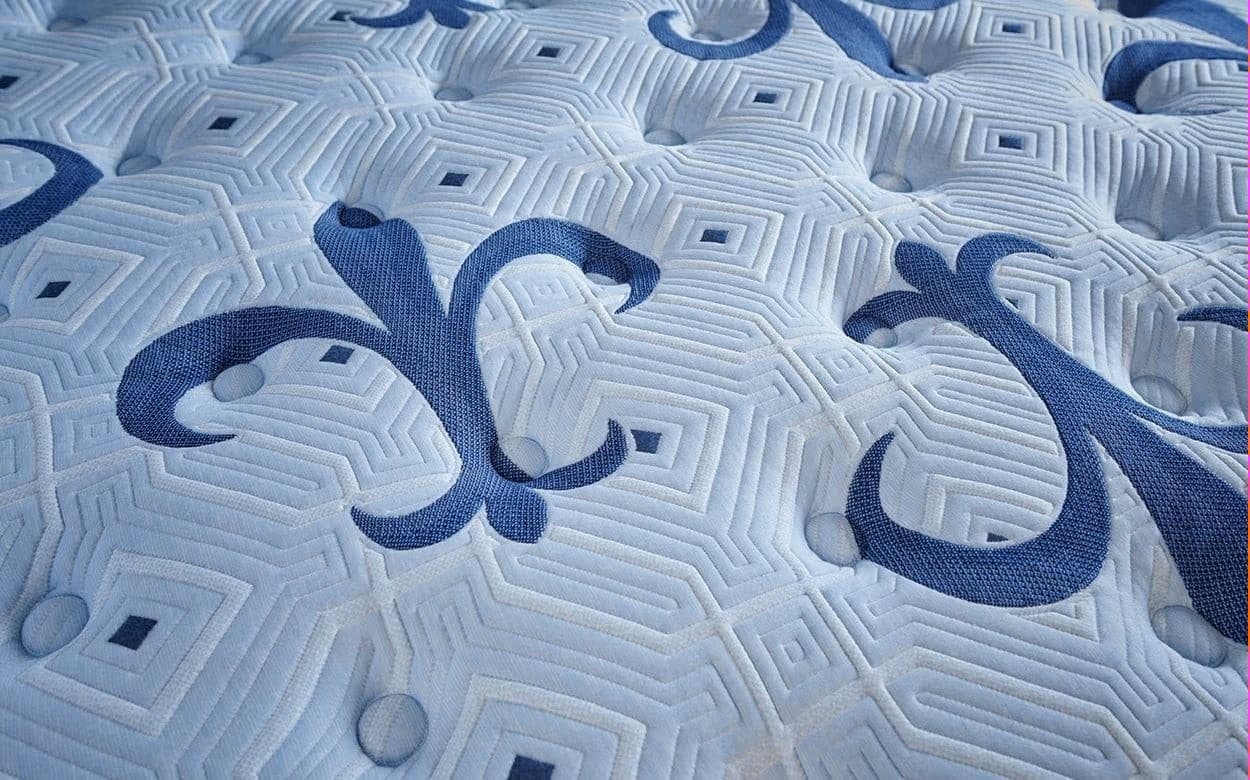What is Polyurethane Foam? If you've ever shopped for a mattress, furniture, or even car seats, chances are you’ve come across this versatile and widely-used material. Polyurethane foam has become a staple in homes and industries across the globe, offering a perfect balance between comfort, affordability, and functionality.
At Mattress Stores Los Angeles, we understand the importance of sleep quality, which is why we offer mattresses made from high-quality polyurethane foam that cater to every type of sleeper. Whether you’re new to this material or looking to deepen your understanding, this blog is your go-to resource for everything polyurethane foam.
Table of Content
- Introduction
- Key Takeaways
- Understanding Polyurethane Foam
- Pros of Polyurethane Foam
- Cons of Polyurethane Foam
- Comparing Polyurethane Foam to Other Materials
- Innovations and Future Trends in Polyurethane Foam
- Polyurethane Foam Market Growth
- Why We Love Polyurethane Foam for Mattresses
- Caring for Polyurethane Foam Mattresses
- Why Buy From Mattress Stores Los Angeles?
- How Polyurethane Foam is Made
- Conclusion
- FAQs
Key Takeaways
- Polyurethane foam is a synthetic material used widely in mattresses, furniture, automotive seating, and insulation due to its comfort, affordability, and versatility.
- It is made from a chemical reaction between polyols and diisocyanates, forming either flexible or rigid foam types.
- The most common mattress types use flexible polyurethane foam, with variations like high-density and high-resilience foam offering enhanced support and longevity.
- Pros of polyurethane foam include affordability, lightweight design, motion isolation, and wide availability in different firmness levels.
- Cons include heat retention, limited durability (especially in lower-density forms), off-gassing, and environmental concerns.
- Compared to other materials like memory foam, latex, and gel foam, polyurethane foam is more affordable but slightly less durable and breathable.
- Innovations in polyurethane foam include bio-based alternatives, cooling gel infusions, open-cell designs, and smart foam technology.
- It’s ideal for all sleep styles and is a great budget-conscious option, especially for children’s rooms, guest beds, or first-time mattress buyers.
- Proper care like rotating the mattress, using protectors, and keeping it dry can significantly extend its life.
- Mattress Stores Los Angeles offers a curated range of polyurethane foam mattresses with expert guidance, free delivery, and a 120-night sleep trial.
- The global polyurethane foam market is booming, expected to exceed $70 billion by 2024, highlighting its increasing demand.
Understanding Polyurethane Foam
Definition and Composition
Polyurethane foam is a synthetic polymer made by reacting polyols and diisocyanates, both of which are derived from petroleum. The result is a flexible, lightweight material that can be customized in terms of firmness, density, and application.
Polyurethane foam is used across industries for its comfort, support, and versatility. It is primarily categorized into two types:
Types of Polyurethane Foam
-
Flexible Polyurethane Foam (FPF): Commonly used in bedding, furniture, automotive seating.
-
Rigid Polyurethane Foam (RPF): Used in thermal insulation and construction.
-
High-Density Foam: Offers enhanced support and durability.
-
High Resilience Foam: Known for better bounce and long-lasting comfort.
-
Viscoelastic Foam (Memory Foam): A subtype developed from polyurethane, responsive to pressure and heat.
Pros of Polyurethane Foam
-
Affordability: Budget-friendly compared to latex and memory foam.
-
Customizable Comfort: Available in various densities and firmness levels.
-
Lightweight: Easy to move and manage.
-
Quick Response Time: Offers a bouncy feel and doesn’t leave body impressions.
-
Versatility: Ideal for different sleep styles and furniture types.
-
Good Motion Isolation: Reduces disturbance from partner movements.
Cons of Polyurethane Foam
-
Heat Retention: Can sleep hot due to closed-cell structure.
-
Durability Issues: Lower-density foams may sag over time.
-
Off-Gassing: Chemical smell upon unboxing, though it usually dissipates.
-
Not Eco-Friendly: Made from petrochemicals, not biodegradable.
-
May Compress Over Time: Especially with frequent use or low density.
Comparing Polyurethane Foam to Other Materials
| Foam Type | Comfort Level | Durability | Heat Retention | Affordability |
|---|---|---|---|---|
| Polyurethane Foam | Medium | Medium | High | High |
| Memory Foam | High | High | Very High | Medium |
| Latex Foam | High | Very High | Low | Low |
| Gel Foam | Very High | High | Low | Medium |
Each material has its strengths. Polyurethane foam wins on cost and weight, while latex excels in durability and breathability
Innovations and Future Trends in Polyurethane Foam
-
Green Chemistry: Use of bio-based polyols to reduce environmental impact.
-
Open-Cell Structures: Improve airflow and cooling properties.
-
Infused Foams: Gel, copper, and charcoal additives enhance cooling and antimicrobial properties.
-
Smart Foams: Integration with sensors to track sleep quality.
-
Recyclable Foams: New developments in recycling used polyurethane materials.
Polyurethane Foam Market Growth
Polyurethane foam isn't just popular it’s booming. The global polyurethane foam market has experienced consistent growth over the last several years, driven by rising demand in the bedding, automotive, and construction sectors.

As illustrated above, the market is projected to reach over $70 billion by 2024, showing just how integral this material is becoming worldwide.
Why We Love Polyurethane Foam for Mattresses
At Mattress Stores Los Angeles, we feature a variety of polyurethane foam mattresses. Here’s why we love them:
-
Great for All Sleepers: Adaptable for back, side, and stomach sleepers.
-
Budget-Conscious Options: Excellent entry point for new homeowners and students.
-
Enhanced Support: Ideal for guest beds and children’s rooms.
-
Reliable Comfort: Maintains firmness and comfort over time (especially in high-density options).
Caring for Polyurethane Foam Mattresses
-
Rotate Regularly: Every 3–6 months to prevent sagging.
-
Use a Mattress Protector: Protects from spills, allergens, and dust mites.
-
Allow to Breathe: Air out the mattress occasionally.
-
Keep Dry: Avoid excess moisture to maintain foam integrity.
Why Buy From Mattress Stores Los Angeles?
Choosing the right mattress store is just as important as choosing the mattress itself. Here’s why Mattress Stores Los Angeles is your best option:
-
Wide Selection: From entry-level to premium foam mattresses.
-
Expert Staff: Personalized recommendations based on sleep habits.
-
Free Local Delivery: Serving all of Los Angeles.
-
Financing Options: Buy now, pay later with flexible plans.
-
120-Night Trial: Risk-free sleep experience.
How Polyurethane Foam is Made
Here’s a quick look at how polyurethane foam is produced and used in mattresses:
Pinterest Inspiration
Check out these cool design ideas using polyurethane foam on Pinterest.
Conclusion
Polyurethane foam is one of the most versatile and accessible materials in today’s bedding industry. While it may not have the prestige of latex or memory foam, it holds its own with unbeatable affordability, comfort, and adaptability.
At Mattress Stores Los Angeles, we believe everyone deserves a good night's sleep. Our polyurethane foam mattresses offer comfort without compromise. Come visit us or shop online to find your perfect match.
Frequently Asked Questions
Is polyurethane foam safe for sleeping?
Yes, especially if it’s CertiPUR-US certified, meaning it meets safety standards for content, emissions, and durability.
How long does a polyurethane foam mattress last?
Typically 5–7 years, depending on density and usage.
Does it contain harmful chemicals?
Modern foams are produced with strict regulations. Always check for certifications.
Can I use it on an adjustable bed?
Yes, its flexibility makes it ideal for adjustable bases.
Does polyurethane foam sleep hot?
Traditional foams may retain heat, but modern versions with gel or open-cell structures improve cooling.
Is polyurethane foam the same as memory foam?
No. Memory foam is a type of polyurethane foam with viscoelastic properties.
Is this material good for people with back pain?
High-density polyurethane foam can provide good lumbar support.
Is polyurethane foam eco-friendly?
Standard versions are not, but newer bio-based versions are more sustainable.
How do I reduce the smell when unboxing?
Let the mattress air out in a ventilated room for 24–48 hours.
Where can I buy a quality polyurethane foam mattress in LA?
Visit Mattress Stores Los Angeles for top-rated products and unbeatable service.



